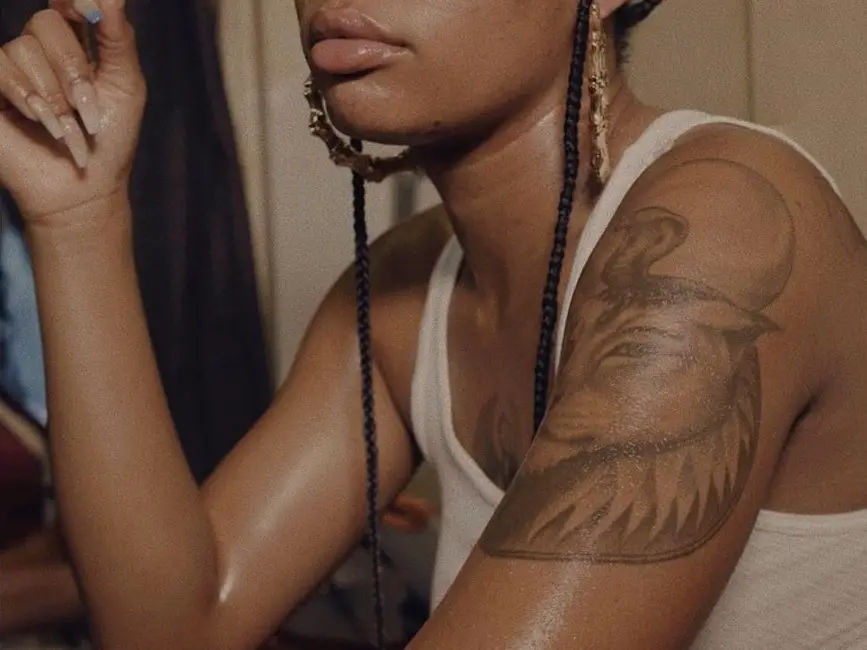In the past, tattoos have been viewed as scandalous and have had a dangerous yet strikingly rebellious connotation, but millennials are now flaunting tattoos as a form of self-expression.
This has normalized tattoos and increased their popularity, which is evident through the growing rate of tattoos on college campuses. The presence of body art is also starting to make its way into more conservative industries.
The cultural symbolism that body art represents for people of color seems to have been forgotten. For many people of color, tattoos are a means to embrace and represent their cultural heritage.
At the same time, their tattoos might come with more baggage. Cultural appropriation can take the form of a tattoo and become a permanent sign of exploitation. Many people of color who have tattoos are discriminated against within their own culture. They must fight off judgement and scrutiny from society because certain forms of free expression are often seen as disgraceful.
This type of discrimination is especially evident within Japanese culture, as an anti-tattoo epidemic is rooted in their society — yet other Japanese art forms are celebrated.
In an interview with Japanese tattoo artist Aki, he speaks on the disapproval and intense accusations people make when they find out his profession, or even when they see the presence of tattoos on his skin.
“Sometimes they look at me like I’m a scumbag, maybe even a criminal,” he shares. “If my tattoos are showing, I feel like I’m being watched. They just get scared. They try not to look at you, but you can tell they are looking out of their periphery. I can feel them.”
Embracing a tattooed lifestyle in Japan is a huge risk, and showcasing body art unfortunately comes with mindless assumptions about moral character. In certain parts of Japan, people with tattoos are outlawed from using public bathhouses and staying at certain hotels. Signs that read “No Tattoos Allowed” are plastered all over the city.
There is a double standard in regards to foreigners or white Americans having tattoos within Japanese culture. In the interview, Aki peruses the streets of Japan and asks people what they think of foreigners with body art. A local Japanese man answers, “Not to be racist, but when foreigners have tattoos, they look cool. Tattoos are considered fashionable in the West, but that’s not the case in Japan.”
In Japan, if a Japanese person decides to have tattoos, they can expect to be discriminated against in the workforce, seen as a criminal and feared by many. However, if an American walks around in Japan with the same body art, they are not held to the same standards, judged or ridiculed whatsoever.
This is an issue of self-expression that stems from unresolved matters of race, culture and censorship. People of color have to fight in order to achieve liberation.
In Indian culture, there are similar misconceptions about what it means to have tattoos because of a lack of education about the tattoo industry. The history of tattoos in India is rich in the significance tattoos have among Indian culture. India has century old traditions of tattooing that each have different interpretations as to why body art can be such an important part of physical appearance.
Many previous generations of Indians have used body art as a portal to spiritual enlightenment. Certain tattoo designs were even used as a means of identification for loved ones in the afterlife. However, tattoos also revert to sexist ideologies; tattoos for Indian women have been used as a symbol of being irrefutably married and therefore marked as property.
On the other hand, henna tattoos are used as a token of good luck on a woman’s wedding day — they are meant to embrace feminine power. These two vastly different connotations that come with tattoos in Indian culture are perplexing — they simultaneously guide spiritual communication and repress sexuality.
Additionally, many young women within Indian culture are tattooed as children without their consent. This type of forced tattooing is a form of mass labeling that has been used for decades to dehumanize certain racial and ethnic groups. This is the darker side of the power tattoos can have when creative expression is exploited and used as a weapon of possession.
Although Indian culture has a love for tattooing that goes beyond decoration, body art is now being rejected and denounced as dirty. Much of this stems from the myth that tattooing carries diseases and ailments, such as HIV.
The Indian youth today are working to destigmatize tattoos. Mandalas, henna inspired dot work and Hindu deities are becoming more popular in Indian culture. However, this body art can be interpreted as cultural appropriation, which takes form when certain images are displayed on someone who has not experienced the specific cultural significance that is tied to that symbol.
However, many people of color use tattoos as a way to be proud of their heritage and to connect spiritually with the world. Body art allows them to finally reclaim parts of their cultural experience that has been taken through discrimination.
Americans have the luxury of self-expression through body art, which is a symbol of ultimate freedom; that said, they must recognize that the situation is much more complex for people of color. It’s important to pay homage to the tattoo’s cultural history, and it’s vital to understand that people of color bravely use tattoos to honor their culture.
Tattoos are a means of claiming your identity in a bold way, so decorate your body with what you know, like images that represent your experiences. Next time you’re getting inked, think about the cultural history that tattooing has to offer, and find gratitude in this permanence.
















